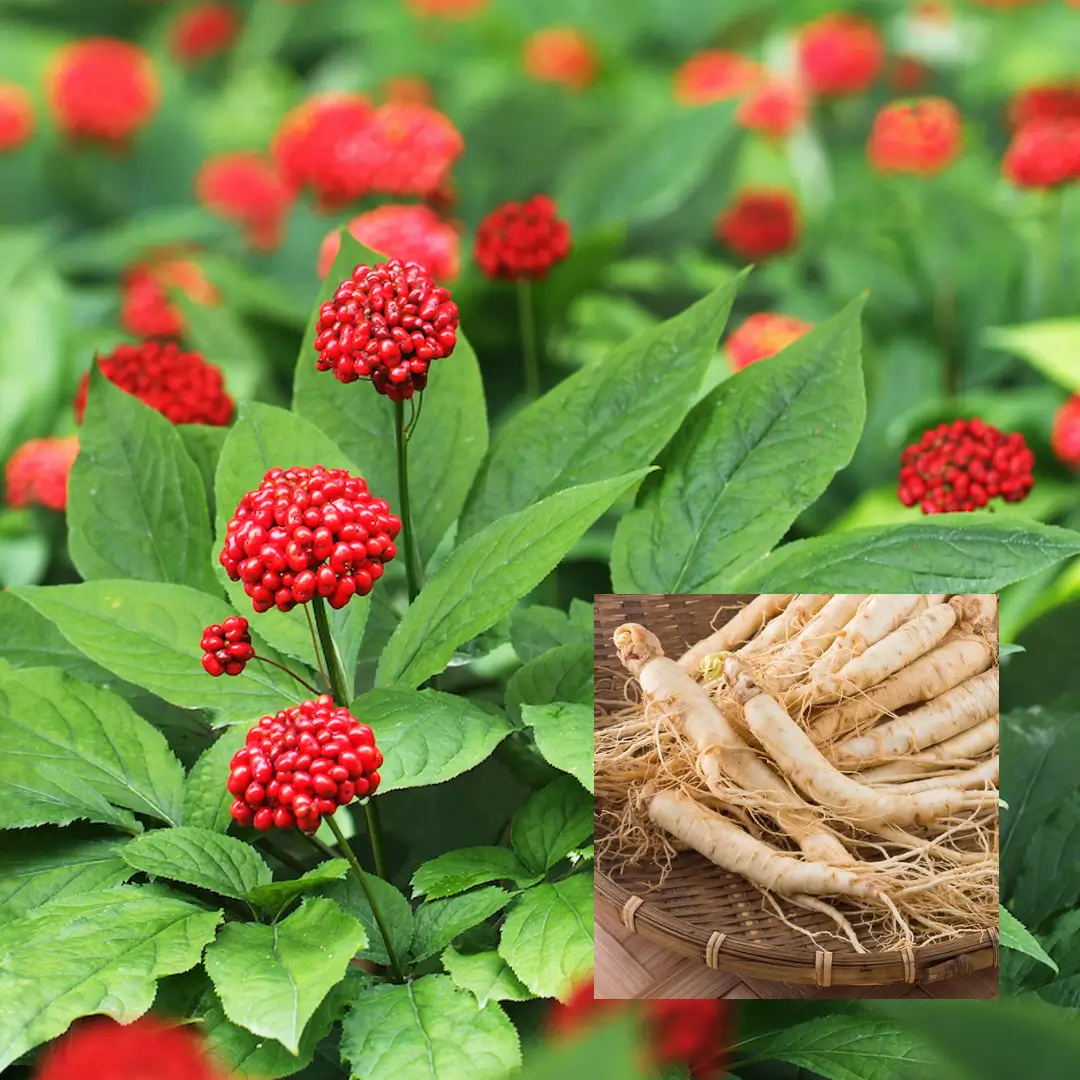Grow Ginseng has captured the fascination of herbal enthusiasts and health aficionados alike for centuries. Renowned for its medicinal properties, this slow-growing perennial is not only valuable but also a delightful challenge to cultivate. In this guide, I’ll walk you through the ins and outs of how to grow ginseng—from understanding its requirements to harvesting your very own roots. Let’s dig deep into this rewarding endeavor!
Understanding Ginseng: A Brief Overview
Before diving into the practicalities of growing ginseng, let’s familiarize ourselves with the plant. Ginseng typically grows 8 to 16 inches tall and features three to five upright stems, each adorned with three to five toothed leaflets. In spring, tiny whitish-green flowers bloom, followed by vibrant red berries that appear in late summer or early fall. But it’s the root, often referred to as a rhizome, that boasts the most significant medicinal properties.
The Fascinating History of Ginseng
Ginseng’s history is as rich as its flavor. Native to North American woodlands, American ginseng (Panax quinquefolius) has long been cherished by many Native American Nations for its health benefits. Meanwhile, its Asian counterpart, Panax ginseng, has been a staple in Chinese medicine for centuries. This age-old herb has garnered high market demand, particularly in China, leading to overharvesting in the past. Understanding this history gives you an appreciation for why growing ginseng can be so rewarding!
Requirements for Growing Ginseng
If you’re serious about how to grow ginseng, you need to ensure you meet its specific growing requirements. Ginseng thrives under particular conditions, and here’s what you need to create the ideal environment.
Location
- Cool and Shady Spot: Ginseng loves to keep it cool. You’ll want to find a location that mimics its natural woodland habitat—think cool, shady areas that protect the plant from harsh sunlight.
- High Canopy of Shade: Ideally, ginseng prefers a high canopy of mixed hardwood trees. This ensures it gets the filtered sunlight it craves while staying protected from direct rays.
- Slight Slope for Drainage: A slight slope can enhance drainage, helping prevent waterlogging, which ginseng dislikes.
Soil
- Well-drained, Humus-rich Soil: Ginseng thrives in soil that is well-drained yet rich in organic matter. Think about how lush a forest floor looks; that’s the type of environment you want to replicate.
- Slightly Acidic pH: Ginseng prefers slightly acidic soil, ideally with a pH between 5.5 and 6.5. Testing your soil can help ensure you’re within this range.
- Adding Organic Matter: Incorporating well-composted leaf litter or organic compost will enrich your soil, making it more suitable for ginseng cultivation.
Moisture
- Consistent Moisture: Ginseng requires consistent moisture throughout its growing season. However, be cautious not to overwater—ginseng roots dislike soggy conditions. Think of it as finding the sweet spot between thirsty and drowning!
Patience is Key
Let’s face it—growing ginseng is not for the impatient! It typically takes 5 to 10 years before your ginseng roots reach a harvestable size. But with patience comes the reward of harvesting a plant that’s steeped in history and wellness.
Planting Ginseng
Now that you’re familiar with what ginseng needs to grow, let’s dive into the nitty-gritty of planting it.
Preparation
- Clear the Area: Start by removing low-hanging branches from surrounding trees. This promotes air circulation and ensures your ginseng plants receive the right amount of light.
- Check Soil Quality: Make sure your soil has adequate organic matter. If not, consider adding compost or well-rotted leaf litter.
Planting Methods
Seeds vs. Seedlings
You can grow ginseng from either seeds or seedlings, but each has its own set of advantages.
- Seeds: If you opt for seeds, make sure they are stratified (exposed to a cold period) for faster germination. This process mimics the natural cycle that seeds would experience in the wild.
- Seedlings: Starting with seedlings can speed up your journey to harvest. Look for one- or two-year-old seedlings for quicker maturity.
Spacing and Care
- Spacing: Leave about two feet between your ginseng plants. This spacing allows for good air circulation, reducing the risk of diseases that can arise when plants are crowded.
- Moisture and Weeding: Keep the plants well-watered and mulched. Regularly check for weeds and pests, as ginseng is susceptible to both.
Container Growing
Can you grow ginseng in a container? Absolutely!
- Container Choice: Use a container with drainage holes to ensure excess water can escape.
- Soil Mix: Fill the container with a loamy soil mix. Plant your seeds about 1.5 inches deep.
- Shady Spot: Place your container in a shady location and keep the soil consistently moist.
Transplanting Seedlings
Once your seedlings are established, you can transplant them into your woodland garden, preferably when they are still under two years old. Older seedlings tend to experience shock during transplantation.
Harvesting Ginseng
After all that hard work, you’re probably wondering when you can finally enjoy the fruits of your labor. Harvesting ginseng typically occurs in the fall, as the leaves begin to die back. Here’s how to do it right:
- Timing: Wait until your plants are 5-10 years old. This is when the roots are large enough to be harvested.
- Harvesting Technique: Gently dig up the roots, taking care not to damage them. Remember, these roots have been growing for years!
- Cleaning: Wash the roots gently and let them dry in a well-ventilated area, away from direct sunlight. This drying process can take two to four weeks.
- Storage: Once dried, store the roots in a ventilated box or basket to keep them fresh and ready for use.
Buying Ginseng
If you prefer not to grow your own, or if you want to supplement your harvest, you can buy ginseng seeds or seedlings from various sources.
- Stratified Seeds: Look for seed companies like Territorial Seed Company or Johnny’s Selected Seeds, which offer stratified seeds ideal for planting.
- Local Specialty Growers: Many local growers sell seedlings, allowing you to get a jumpstart on your ginseng garden.
Growing ginseng is a journey that rewards your patience and diligence. By understanding the requirements for this unique plant, you can create an ideal environment for it to thrive. Remember to nurture your ginseng with care and attention, and you’ll be well on your way to harvesting this precious herb. Whether you’re looking to use it for its medicinal properties or simply enjoy the thrill of gardening, knowing how to grow ginseng adds a fascinating layer to your gardening skills. So, why not start your ginseng garden today? Your future self will thank you!
Common Questions About Growing Ginseng
You might have a few questions still buzzing around your mind about growing ginseng. Let’s tackle some of those FAQs!
How long does ginseng take to grow?
Ginseng typically takes 5 to 10 years to reach a harvestable size. The length of time can vary depending on the growing conditions, such as soil quality, moisture levels, and shade. Patience is essential when cultivating ginseng, as the roots need ample time to develop their medicinal properties fully.
Is growing ginseng easy?
Grow Ginseng is not necessarily easy, as it requires specific conditions to thrive. It prefers a cool, shady environment and well-drained, humus-rich soil. Additionally, ginseng is a slow-growing plant, which demands patience and careful attention. However, with the right knowledge and commitment, it can be a rewarding endeavor for dedicated gardeners.
What is the best climate to grow ginseng?
Grow Ginseng in a temperate climate with distinct seasons. It thrives in cool, moist conditions, making it well-suited for areas with mild summers and cold winters. Ideally, it should be grown in regions with plenty of shade, such as under a forest canopy. The optimal climate conditions help ensure healthy growth and high-quality roots.
Will ginseng grow anywhere?
Ginseng will not grow just anywhere. It has specific requirements for soil, shade, and moisture that must be met for successful cultivation. It typically prefers well-drained, slightly acidic soil rich in organic matter. Additionally, ginseng needs a shaded environment that mimics its natural woodland habitat. While it may be possible to grow ginseng in various locations, ensuring these conditions are met is crucial for optimal growth and development.


